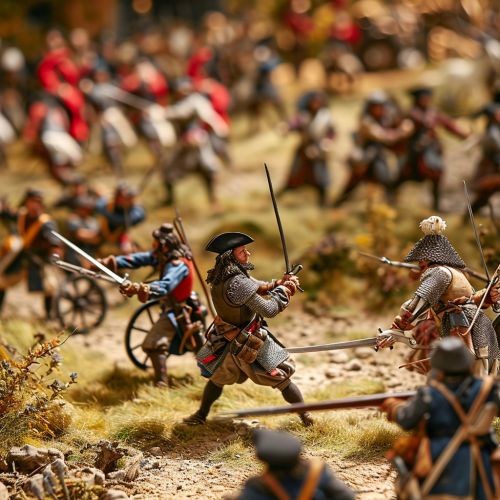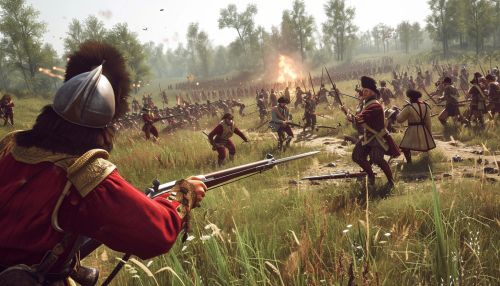English Civil War
Origins and Causes
The English Civil War (1642–1651) was a series of armed conflicts and political machinations between Parliamentarians ("Roundheads") and Royalists ("Cavaliers") primarily over the governance of the Kingdom of England. The first (1642–1646) and second (1648–1649) wars pitted the supporters of King Charles I against the supporters of the Long Parliament, while the third (1649–1651) saw fighting between supporters of King Charles II and supporters of the Rump Parliament. The war ended with the Parliamentarian victory at the Battle of Worcester on 3 September 1651.
The civil war was a direct result of a conflict over the power of the monarchy and the rights of Parliament. During the early phases of the war, the Parliamentarians expected to retain Charles as king, but with expanded powers for Parliament. The Royalists, on the other hand, sought to maintain the status quo of a monarchy with limited parliamentary control. Charles, however, proved unwilling to accept a constitutional monarchy, and war became inevitable.


The First Civil War (1642–1646)
The first major battle of the war was fought in Edgehill on October 23, 1642. Both the Royalists and the Parliamentarians claimed victory, but in truth, the battle was inconclusive. However, it did establish the pattern of the war in many ways. There would be pitched battles, sieges, and periods of mobile warfare, interspersed with truces and negotiations.
The Second Civil War (1648–1649)
The second civil war was a direct result of the failure of the first. The Parliamentarians, who had been united in their opposition to Charles I, were now divided over what to do with the king. The army, under the control of Oliver Cromwell, wanted to bring the king to trial for high treason, while the majority of the Parliament wanted to negotiate. The result was a brief and bloody war, culminating in the trial and execution of Charles I.
The Third Civil War (1649–1651)
The third civil war was essentially a royalist rebellion against the newly formed Commonwealth of England. The rebellion was led by Charles II, the son of the executed Charles I. Despite initial successes, the royalists were ultimately defeated at the Battle of Worcester in 1651. This marked the end of the civil war and the beginning of the Interregnum, a period of parliamentary rule without a monarch.
Aftermath and Impact
The English Civil War had profound effects on the history of the British Isles. It led to the trial and execution of Charles I, the exile of his son Charles II, and replacement of the English monarchy with first, the Commonwealth of England (1649–1653), and then with a Protectorate (1653–1659), under Oliver Cromwell's personal rule. The war led to the abolition of the House of Lords and the Anglican church by the Rump Parliament, along with other constitutional changes, before these institutions were restored in 1660 during the Restoration. The war also set a precedent for the British subjects' right to overthrow an oppressive king—a principle that would be invoked during the Glorious Revolution in 1688.
